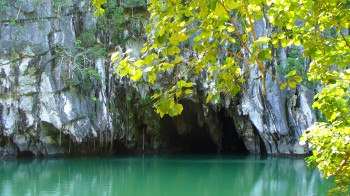Ancient Cold Period Could Provide Clues About Future Climate Change
October 10, 2016

Researchers have found that a well-known period of abrupt climate change 12,000 years ago occurred rapidly in northern latitudes but much more gradually in equatorial regions.
The research, published Sept. 2, 2015, in Nature Communications, focuses on the Younger Dryas, a cooling period that started when the North Atlantic Current stopped circulating, causing Earth’s northern hemisphere to enter into a deep chill.
Temperatures in Greenland dropped by approximately 18 degrees Fahrenheit in less than a decade. The event also caused rainfall to decrease in places as far away as the Philippines. However, whereas temperatures in Greenland responded quickly to the ocean current
shutdown and subsequent reboot 1,000 years later, it took hundreds of years for rainfall in the Philippines to be affected and to recover.
“We found that the temperature in Greenland is like a small ship that you can stop and turn quickly because of the influence of sea ice in the region, while rainfall in the tropics is like a big ship that takes a long time to course correct,” said lead researcher Jud Partin, a research associate at the Institute for Geophysics (UTIG).
The shutdown of the current was triggered by the world warming after the last ice age. Melted glaciers diluted northern seawater with freshwater and changed ocean water density. This change disrupted the current and the climate. The Younger Dryas events inspired the 2004 disaster flick “The Day After Tomorrow,” which exaggerates the speed and strength of the cooling by depicting the planet entering an ice age in a matter of weeks.
This new study concludes that these changes do not occur or recover at the same rate, as had been previously assumed. The researchers discovered rainfall in the Philippines was affected by analyzing minerals deposited in a stalagmite from a cave in Puerto Princesa. They found that it took more than 550 years for drought conditions to reach their full extent, and about 450 years to return to pre-Younger Dryas levels after the current began circulating again.
Partin conducted the work with UTIG Director Terry Quinn and collaborators from the National Taiwan University and the University of the Philippines-Diliman. The study was funded by a grant from the National Science Foundation
Back to the Newsletter